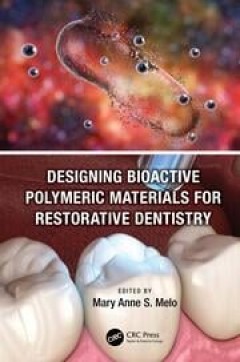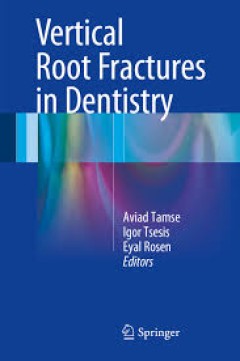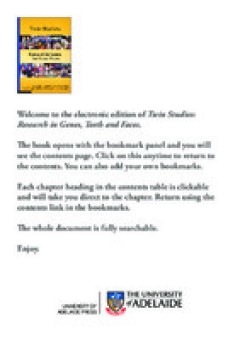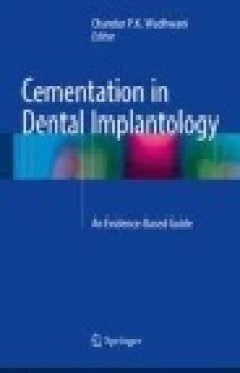Filter by

Patient Self Referral: A Guide for Therapists
This exciting series is unique in providing advice on management, leadership and development for those in the Allied Health Professions (AHP). This practical and comprehensive guide contains all the information you need to set up a self referral service successfully, including answers to frequently asked questions, sample referral forms, a sample poster, datasets, guides for consistency, an ant…
- Edition
- -
- ISBN/ISSN
- 9781315382814
- Collation
- -
- Series Title
- -
- Call Number
- -

Compassion and Caring in Nursing
'Compassion, in its many manifestations, is the key to rediscovering what lies at the heart of nursing practice all over the world. It is absolutely essential that nurses start to revisit compassion as a central focus for nursing practice...' This user-friendly book adopts a patient-centred approach to care. The challenging theories are grounded in practical applications, encouraging readers to…
- Edition
- -
- ISBN/ISSN
- 9781315377889
- Collation
- -
- Series Title
- -
- Call Number
- -

Socio-economics of personalized medicine in Asia
- Edition
- -
- ISBN/ISSN
- -
- Collation
- -
- Series Title
- -
- Call Number
- -
- Edition
- -
- ISBN/ISSN
- -
- Collation
- -
- Series Title
- -
- Call Number
- -

Designing Bioactive Polymeric Materials for Restorative Dentistry
Restorative biomaterials in dentistry are designed to restore the shape and function of teeth. Their applicability is related to restorative procedures such as dental restorations, dentures, dental implants, and endodontic materials. Designing Bioactive Polymeric Materials for Restorative Dentistry reviews the current state of the art for restorative biomaterials and discusses the near-future t…
- Edition
- -
- ISBN/ISSN
- 9780429113284
- Collation
- p. 298
- Series Title
- -
- Call Number
- -

Vertical Root Fractures in Dentistry
In this book, leading experts provide a comprehensive overview of vertical root fractures (VRFs) in endodontically treated teeth, which may be associated with potentially severe damage to the supporting bone. A helpful categorization of the various tooth and root fractures is presented and etiological factors are identified, with discussion of anatomical and biomechanical aspects and the dynami…
- Edition
- -
- ISBN/ISSN
- 978-3-319-16847-0
- Collation
- -
- Series Title
- -
- Call Number
- -

Twin Studies: Research in Genes, Teeth and Faces
This volume is about an ongoing long-term research initiative led by researchers from the School of Dentistry at the University of Adelaide. The aim of this book is to provide an overview of the studies of the teeth and faces of Australian twins and their families that have extended over more than thirty years.
- Edition
- Ed. 1
- ISBN/ISSN
- 9781925261158
- Collation
- 199
- Series Title
- -
- Call Number
- 617.607 TWI t

Oral health of Australian children: The National Child Oral Health Study 2012…
"This collaborative work provides a detailed snapshot of child oral health in Australia. In doing so, it describes the levels of dental caries and its components, dental fluorosis and other oral health conditions and how they vary by social characteristics. It also describes protective factors such as toothbrushing, the use of fluoridated toothpastes and making dental visits. The 2012–14 Nati…
- Edition
- -
- ISBN/ISSN
- 9781925261417
- Collation
- -
- Series Title
- -
- Call Number
- -

Craniofacial and Dental Developmental Defects : Diagnosis and Management
This book is intended as a reference that will provide the practitioner with a framework for establishing a diagnosis and developing a suitable treatment plan in patients presenting with a range of developmental defects of the teeth. The conditions covered include failure of tooth eruption, hypodontia, premature tooth exfoliation, defects of enamel development, and defects of dentin development…
- Edition
- 1
- ISBN/ISSN
- 9783319130576
- Collation
- V, 129
- Series Title
- -
- Call Number
- 617.6

Cementation in Dental Implantology
Treatment by means of dental implants has become increasingly common, but it is now recognized that cementation during the restorative phase can be the source of significant problems. This book examines in detail the issues associated with cementation in dental implantology, with a particular focus on residual excess cement and its consequences. It provides reliable guidance on cement selection…
- Edition
- -
- ISBN/ISSN
- 978-3-642-55163-5
- Collation
- -
- Series Title
- -
- Call Number
- 617.6

Implant Surfaces and their Biological and Clinical Impact
This book provides the reader with the knowledge required in order to understand the chemical, physical, mechanical, and topographical aspects of implant surfaces, as well as their impact on the biological response. Common ways to modify implant surfaces are described, and methods for the evaluation of surface properties are presented in an easy-to-read style. Experimental results that have con…
- Edition
- -
- ISBN/ISSN
- 978-3-662-45378-0
- Collation
- XII, 182
- Series Title
- -
- Call Number
- 611 IMP
 Computer Science, Information & General Works
Computer Science, Information & General Works  Philosophy & Psychology
Philosophy & Psychology  Religion
Religion  Social Sciences
Social Sciences  Language
Language  Pure Science
Pure Science  Applied Sciences
Applied Sciences  Art & Recreation
Art & Recreation  Literature
Literature  History & Geography
History & Geography